

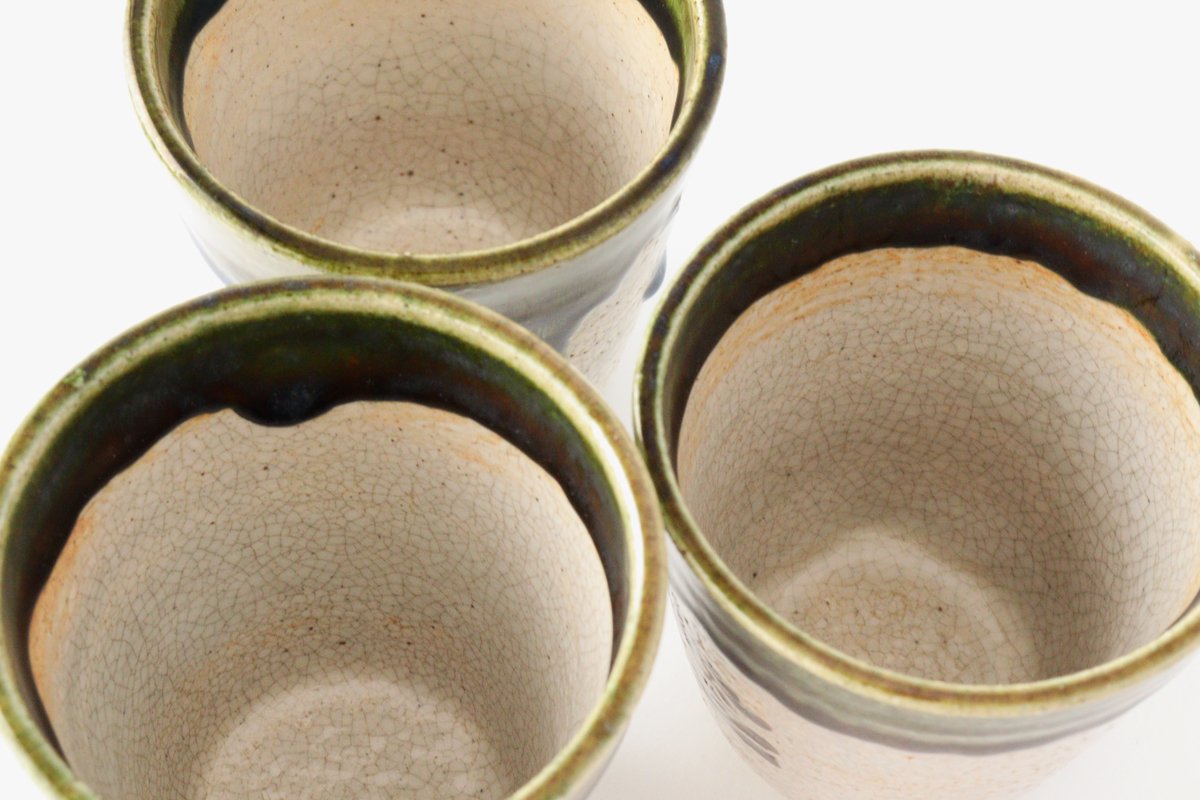










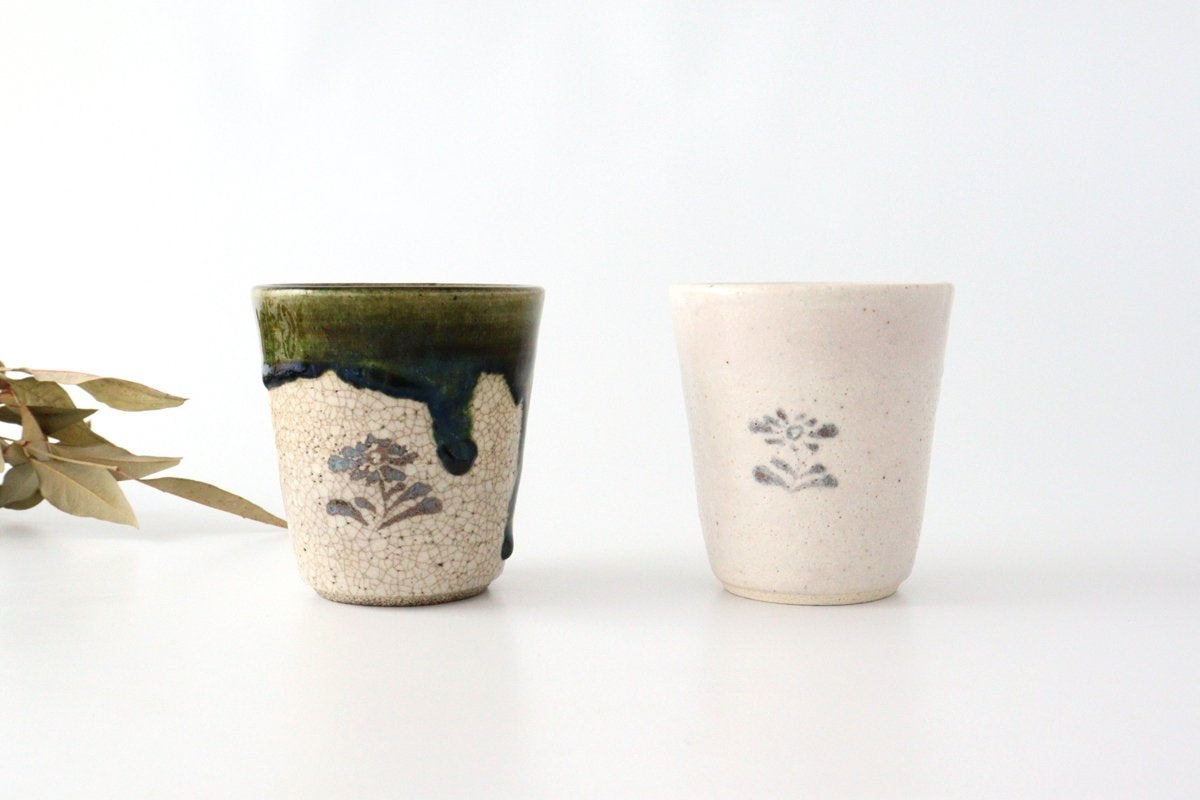
Kiln owner's recommendation for maintenance
-For ceramic materials, soaking the pot in water for a while before use will prevent stains and spots from forming (Medome). For more information, please click here. About cleaning the utensils.
-After use, wash the pot as soon as possible, dry it thoroughly, and store it in a dry place. Insufficient drying may cause mold and odor.
-After use, wash the pot as soon as possible, dry it thoroughly, and store it in a dry place. Insufficient drying may cause mold and odor.
Product Characteristics/Handling Precautions
-Due to the handmade nature of this product, there may be individual differences in color, shape, size, thickness, etc.
-There may be tiny holes. Patterns, and colors may vary.
-The surface of the items may have very small "black spots" or "paint splashes" or "pinholes that do not reach the base of the items.
-This product is recommended for those who want to enjoy the warm texture of handmade products with a different look and feel for each piece.
-The surface of the glaze may be cracked during use, but this is not a crack or breakage and will not interfere with its use.
-Prices are subject to review and revision by artists and potters.
-There may be tiny holes. Patterns, and colors may vary.
-The surface of the items may have very small "black spots" or "paint splashes" or "pinholes that do not reach the base of the items.
-This product is recommended for those who want to enjoy the warm texture of handmade products with a different look and feel for each piece.
-The surface of the glaze may be cracked during use, but this is not a crack or breakage and will not interfere with its use.
-Prices are subject to review and revision by artists and potters.
What you need to know before purchasing
-The appearance of items is created by spots, blurs, unevenness of glaze, shading, and deflection of shape, which cannot be found in mass-produced items.
-The charm of handmade items lies in the fact that no two items are exactly alike, with tiny holes, cracked patterns, distortions, and the like, and that the colors, size, and shape of each piece vary slightly from one to another..
-The coloring, size, and shape of each piece is slightly different, and the charm of handmade items lies in the fact that they are not exactly the same.
-The finish is relatively uniform, but because it is handmade, there are individual differences in shape, size, color, and so on.
-The charm of handmade items lies in the fact that no two items are exactly alike, with tiny holes, cracked patterns, distortions, and the like, and that the colors, size, and shape of each piece vary slightly from one to another..
-The coloring, size, and shape of each piece is slightly different, and the charm of handmade items lies in the fact that they are not exactly the same.
-The finish is relatively uniform, but because it is handmade, there are individual differences in shape, size, color, and so on.
Other Notes
-Some pieces have engraving on the reverse side of the piece, while others do not. Please note that we are unable to make any specifications. Please note that we are not able to specify which side has the engraving on it. Please click here for more details. What you need to know when buying Japanese tableware.




























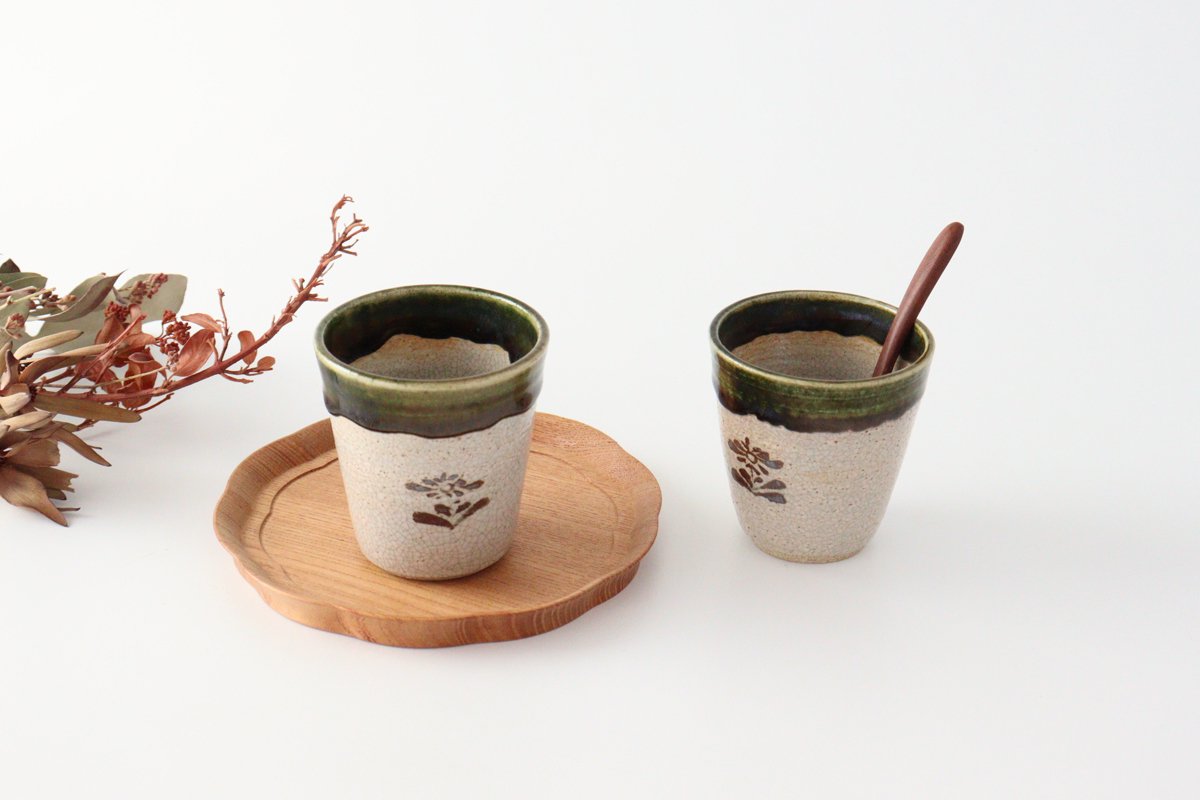 The Kasumi floret pattern is created by drawing each petal one by one by using the direction of the brush. Mr. Kato's
careful and detailed craftsmanship shines through.
The Kasumi floret pattern is created by drawing each petal one by one by using the direction of the brush. Mr. Kato's
careful and detailed craftsmanship shines through.
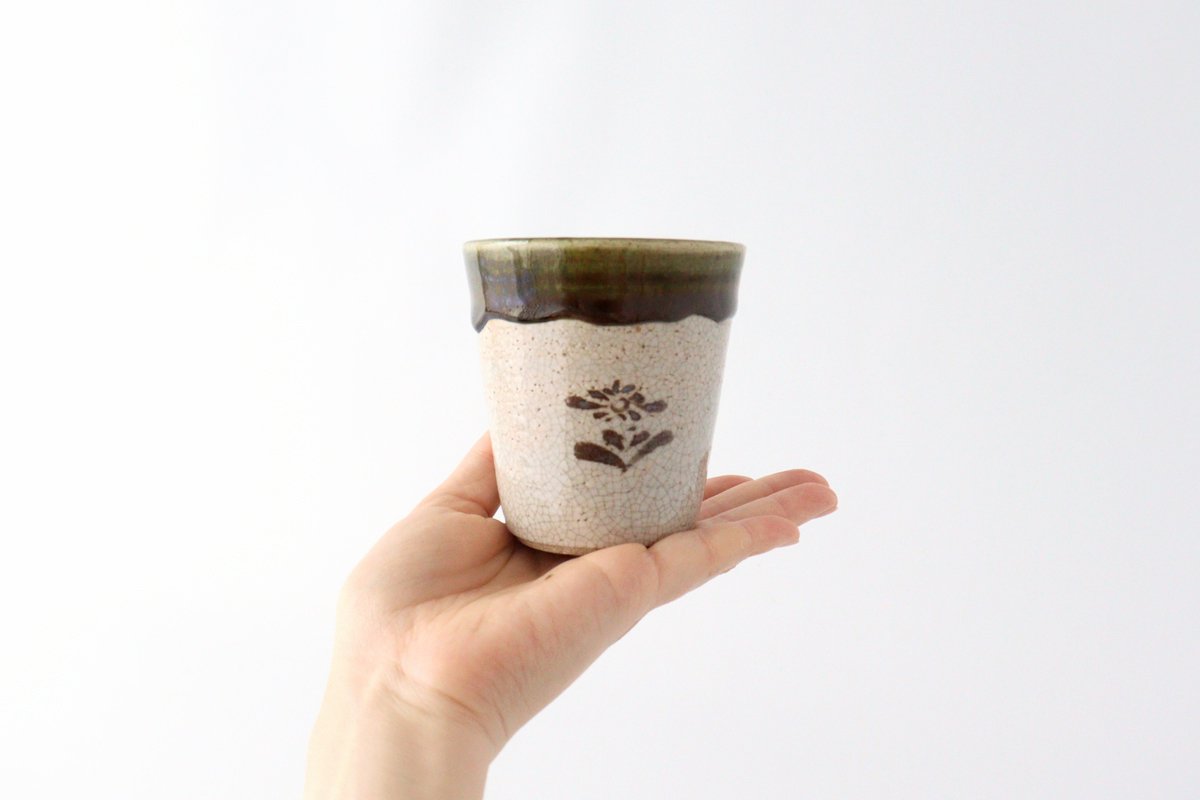 The moss-like deep green of the Oribe glaze is beautiful, and the incisions that spread throughout the cup add depth
of flavor. It has a somewhat nostalgic atmosphere, and will create a peaceful time at your dining table.
The moss-like deep green of the Oribe glaze is beautiful, and the incisions that spread throughout the cup add depth
of flavor. It has a somewhat nostalgic atmosphere, and will create a peaceful time at your dining table.
 Add the vegetable sticks and serve with miso on the side. Cups without handles can be used in a variety of situations
depending on how you use them.
Add the vegetable sticks and serve with miso on the side. Cups without handles can be used in a variety of situations
depending on how you use them.
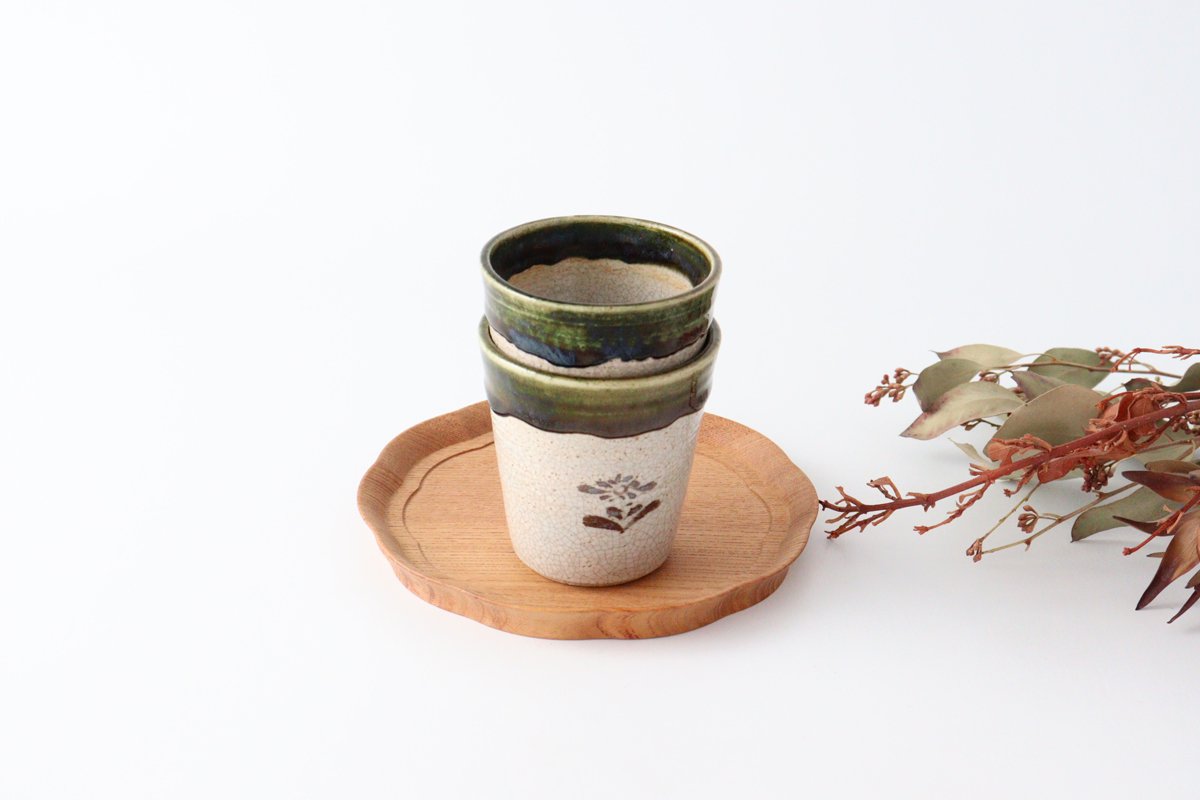
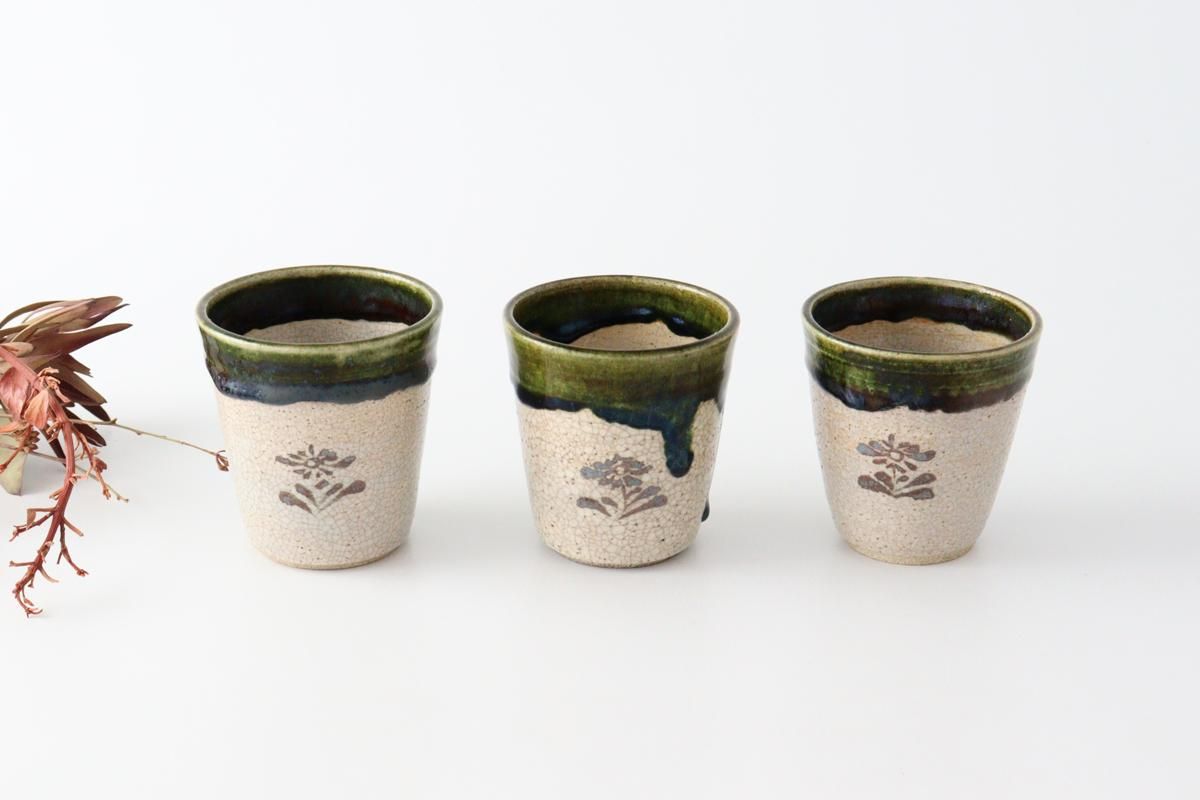 The size of the pottery and handle differs from piece to piece. [Uneven color/uneven baking]
The size of the pottery and handle differs from piece to piece. [Uneven color/uneven baking]
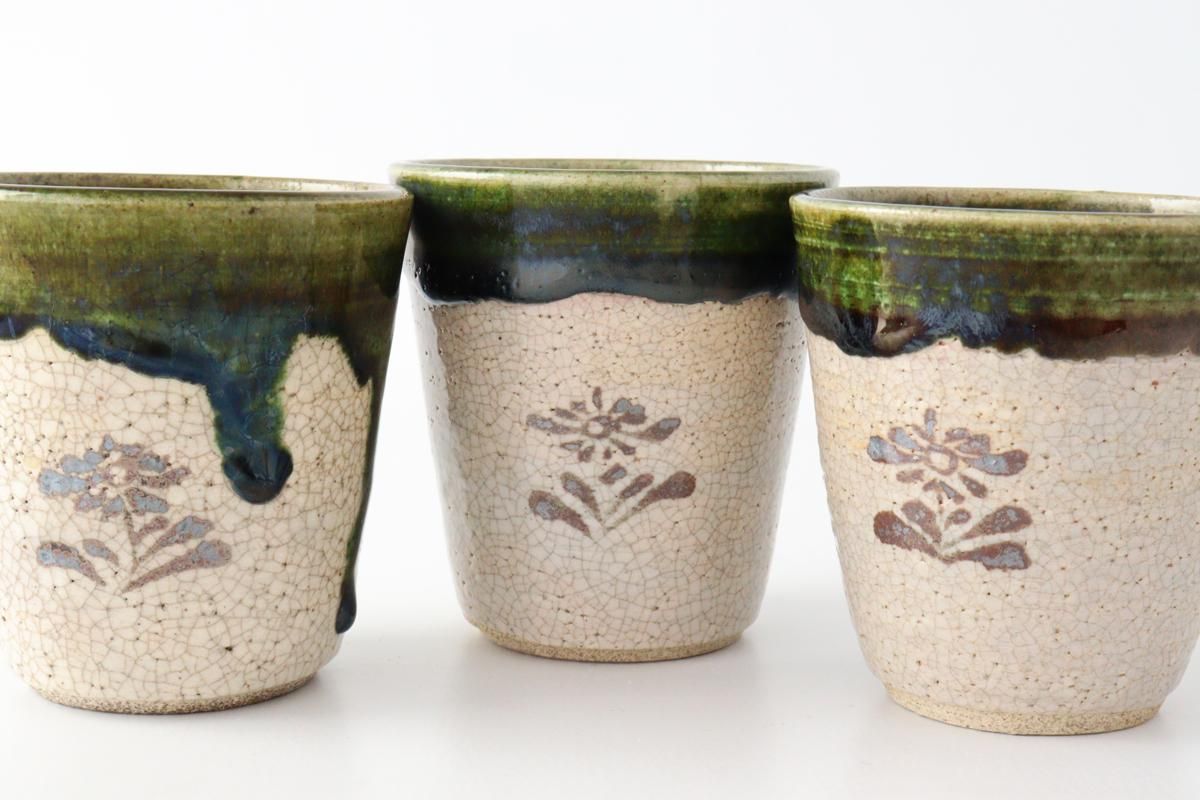 The glaze is carefully applied one by one by hand, so the glaze may not be applied evenly. During firing, the
temperature varies depending on the location of the kiln, resulting in uneven firing. [Other notes]
The glaze is carefully applied one by one by hand, so the glaze may not be applied evenly. During firing, the
temperature varies depending on the location of the kiln, resulting in uneven firing. [Other notes]
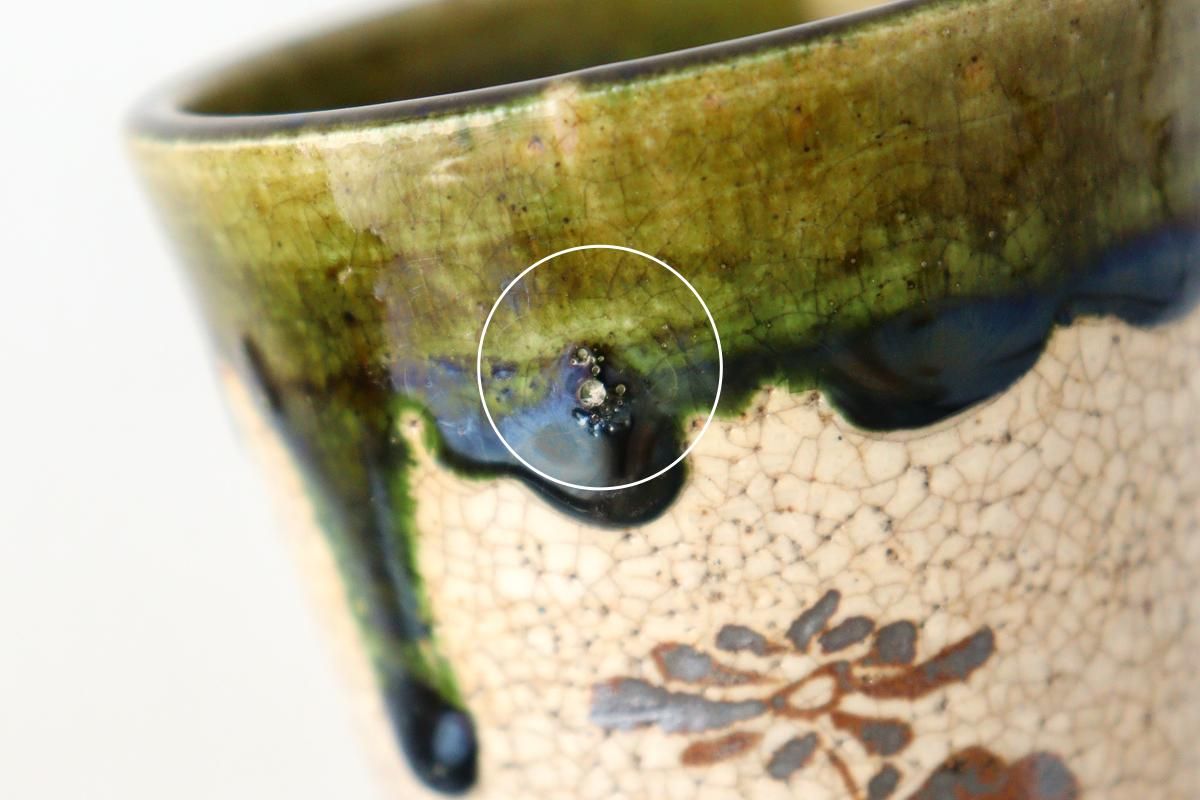 〇Larger pinholes may be seen as shown in the photo. 〇Products that have passed inspection by the pottery and artist
are inspected again and delivered to the customer.
〇Larger pinholes may be seen as shown in the photo. 〇Products that have passed inspection by the pottery and artist
are inspected again and delivered to the customer.

 ■You can also view Seto ware here. Please find your favorite.
■You can also view Seto ware here. Please find your favorite.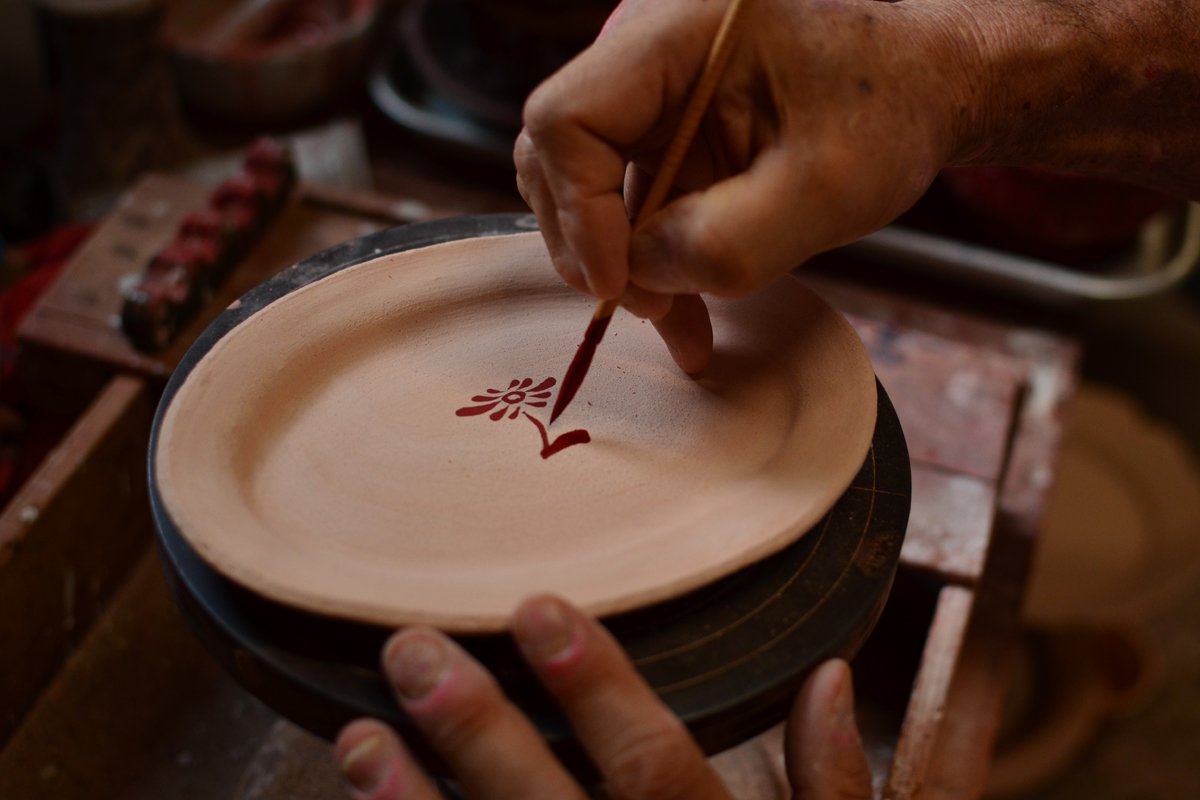 [Image provided by Kitagama Kasen Hiroshige Kato]
[Image provided by Kitagama Kasen Hiroshige Kato]